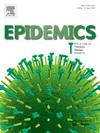2020-2023年荷兰经济活动部门的缺勤情况及其与covid -19样疾病流行的关系
IF 2.4
3区 医学
Q2 INFECTIOUS DISEASES
引用次数: 0
摘要
除了监测死亡率和重症监护病床占用率等疾病终点外,对缺勤情况的监测还可以为大流行疫情的决策提供信息。例如,在卫生保健部门,高发病率伴随着高缺勤率将增加对卫生保健系统的压力,并可能需要调整控制措施。这突出表明有必要评估相关经济部门COVID-19患病率与缺勤之间的关系。我们启动了对旷工的全面监测和分析,并开发了一个自回归时间序列模型,该模型将通过综合征监测测量的COVID-19流行率与荷兰各经济活动部门的旷工率结合起来。该分析定期更新,并与政策制定者分享。总体而言,2019冠状病毒样疾病的流行是2020年11月至2023年5月期间缺勤率变化的最重要因素,各活动部门之间的缺勤率差异显著。在缺勤数据库全面覆盖的部门中,教育和物流部门显示出独立于COVID-19的季节性模式对缺勤的贡献最大。本文章由计算机程序翻译,如有差异,请以英文原文为准。
Work absenteeism across economic activity sectors and its association with COVID-19-like illness prevalence in the Netherlands, 2020–2023
The monitoring of work absenteeism can inform pandemic decision making, besides the surveillance of disease end-points like mortality and intensive care bed occupancy. For instance, high disease prevalence accompanied by elevated levels of absenteeism in the healthcare sector will increase the strain on the health care system, and may necessitate adaptation of the control measures. This highlights the need to assess the association between COVID-19 disease prevalence and absenteeism in relevant economic sectors. We initiated the comprehensive monitoring and analysis of work absenteeism and developed an autoregressive time series model which combined COVID-19 prevalence as measured through syndromic surveillance, with absenteeism across various economic activity sectors in the Netherlands. The analysis was updated regularly and shared with policy makers. Overall, prevalence of COVID-19-like illnesses was the most important contributor to variation in absenteeism over the period November 2020-May 2023, with absenteeism rates varying markedly between activity sectors. Of the sectors well-covered by the absenteeism database, the Education and Logistics sectors showed the greatest contribution of a seasonal pattern independent of COVID-19 to absenteeism.
求助全文
通过发布文献求助,成功后即可免费获取论文全文。
去求助
来源期刊

Epidemics
INFECTIOUS DISEASES-
CiteScore
6.00
自引率
7.90%
发文量
92
审稿时长
140 days
期刊介绍:
Epidemics publishes papers on infectious disease dynamics in the broadest sense. Its scope covers both within-host dynamics of infectious agents and dynamics at the population level, particularly the interaction between the two. Areas of emphasis include: spread, transmission, persistence, implications and population dynamics of infectious diseases; population and public health as well as policy aspects of control and prevention; dynamics at the individual level; interaction with the environment, ecology and evolution of infectious diseases, as well as population genetics of infectious agents.
 求助内容:
求助内容: 应助结果提醒方式:
应助结果提醒方式:


